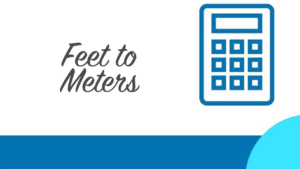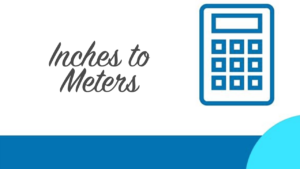Use Binary to Decimal Converter or the following method to convert manually, start by adding the left-most digit to 0. Then, multiply this number by 2 and add the next digit in your number (as you progress from left to right). Repeat this process until you reach the end of your number. The final sum will be your decimal equivalent of the binary integer.
In Simple words:
Binary is a system of counting or encoding something using only two numeric digits, 0 and 1. This number system is the most basic form of computer data storage and processing. So, in order to convert binary to decimal, we must first understand what each digit represents.
The rightmost digit in any binary number is always worth 2^0, or 1. The second column from the right (counting from 0) is worth 2^1, or 2. The next column over is worth 2^2, or 4, and so on. In other words, each column’s value is simply double the previous column’s value.
For example:
The number 10101010 can be represented as follows:
1010 = 1*2^3 + 0*2^2 + 1*2^1 + 0*2^0
= 8 + 0 + 2 + 0
= 10 in decimal.
To convert a binary number to decimal, therefore, all we need to do is sum the values of each column that contains a 1. If there is a 0 in that column, we simply ignore it.
What Each Number in Binary Represents
When converting binary to decimal, it is important to first understand what each number in binary represents. In the binary system, there are only two numbers: 0 and 1. These numbers correspond to the two states that a computer can be in: off and on. As such, each digit in a binary number can be thought of as representing one bit of information.
Determining the Value of Each Digit
The next step in converting binary to decimal is determining the value of each digit in the binary number. In binary, each digit has a value of 2^n, where n is the position of the digit from right to left. The rightmost digit has a value of 2^0, the second digit from the right has a value of 2^1, and so on.
Converting the Binary Number to Decimal

Once you have determined the value of each digit in the binary number, you can begin converting the binary number to its decimal equivalent. To do this, you simply need to start at the rightmost digit and multiply it by 2^0. Then, move on to the second digit from the right and multiply it by 2^1. Continue doing this until you reach the leftmost digit.
Multiplying the First Digit by 2^0
The first step in converting a binary number to a decimal number is multiplying the first digit by 2^0. This is because the first digit is always going to be worth 1 in decimal. For example, if the first digit is 1, then you would multiply 1 by 2^0 to get 1.
Multiplying Subsequent Digits by Increasing Powers of Two
The second step is to multiply the second digit by 2^1. This is because the second digit from the right is always going to be worth 2 in decimal. For example, if the second digit is 1, then you would multiply 1 by 2^1 to get 2. You would then continue this process for the third digit (multiply by 2^2), fourth digit (multiply by 2^3), and so on.
Adding Up All of the Numbers
After you have finished multiplying all of the digits by their respective powers of two, you simply need to add up all of the numbers to get the final decimal equivalent of the binary number. For example, if the binary number was 1011, you would have 1*2^0 + 0*2^1 + 1*2^2 + 1*2^3 = 11.
Some Numbers Cannot Be Converted
There are some numbers that cannot be converted from binary to decimal, such as 11001012. This is because not all numbers can be represented in binary form. When attempting to convert a number like this, you will simply need to look at the closest number that can be represented in binary and use that instead.
How do you convert 110011 binary to decimal?
To convert a binary number to a decimal, you need to determine the value of each digit in the binary number and then add those values together. The value of each digit is determined by its position in the binary number. For example, the first digit ( farthest to the right) has a value of 1, the second digit has a value of 2, the third digit has a value of 4, and so on. This means that the value of each digit is equal to two and raised to a power equal to the position of that digit minus one. So, the value of the first digit is 2^0=1, the value of the second digit is 2^1=2, and so on. Therefore, when we convert 110011 from binary to decimal, we get: 1*2^5 + 1*2^4 + 0*2^3 + 0*2^2 + 1*2^1 + 1*2^0 = 32+16+0+0+2+1 = 51
What does 11111111 mean in binary?
The number 11111111 in binary represents the decimal number 255. The first eight digits of binary (11111111) represent the numbers 0-7 in binary form, while the last eight digits (10000000) represent the numbers 8-15 in binary form. In other words, the number 255 in binary is made up of two sets of eight 1s and 0s. The first set (11111111) equals 128+64+32+16+8+4+2+1, or 255 in decimal form. The second set (10000000) also equals 128+64+32+16+8+4+2+1, or 255 in decimal form. So, when you put them both together, you get 11111111, which is equal to255 in decimal form.
How do you turn 10101.101 into a decimal?
To turn 10101.101 into a decimal, first divide the number into two sections: 10101 and .101. Next, convert each section to decimal using exponentiation of 2. For 10101, this would be 1*2^4 + 0*2^3 + 1*2^2 + 0*2^1 + 1*2^0, which equals 21. For .101, this would be 1*2^-1 + 0*2^-2 + 1*2^-3, which equals .625. Finally, add these two numbers together to get 21.625.
What is the value of 10101 in decimal number System?
The value of 10101 in decimal number system is 21. The first column on the left is the 2^0, or 1, column. The next column to the right is the 2^1, or 2, column. The next column is the 2^2, or 4, column. You can see that each column doubles the previous one. So, we just need to add up the values in each column where there is a 1 present to get the final answer. In this case, it would be 1 + 4 + 16 = 21.
What does 10101 mean in binary?
In binary, the number 10101 means 21.
How do you convert 100101 in binary to decimal?
To convert binary to decimal, you need to know the value of each digit in the binary number. The value of each digit is double the value of the previous digit. The first digit has a value of 1, the second digit has a value of 2, the third digit has a value of 4, and so on. In the binary number 100101, the first digit (1) has a value of 1, the second digit (0) has a value of 2, the third digit (0) has a value of 4, and so on. To find the decimal equivalent of a binary number, you add up the values of each digit. In the binary number 100101, the first digit has a value of 1, the second digit has a value of 0, and so on. The decimal equivalent of 100101 is 37.
How do we convert binary to decimal?
The first step in converting a binary number to decimal is to add the left-most digit to 0. So, if the number is 1001, we would get 0 + 1 = 1. Next, we need to multiply this result by 2 and add the next digit in the number. In this case, that would be 1 x 2 + 0 = 2. We repeat this process for each remaining digit in the number until we reach the end. So, the final calculation would be 1 x 2^3 + 0 x 2^2 + 0 x 2^1 + 1 x 2^0 = 8 + 0 + 0 + 1 = 9.
What is 1100 as a decimal?
1100 as a decimal is 12.
How do you convert 100101 binary to decimal?
To convert a binary number to decimal, you need to know the value of each digit in the binary number. The value of each digit is based on its position in the binary number. The first digit has a value of 2^0, the second digit has a value of 2^1, and so on. To find the decimal equivalent of a binary number, you simply add up the values of each digit in the binary number. So, for the binary number 100101, we have: 1*2^5 + 0*2^4 + 0*2^3 + 1*2^2 + 0*2^1 + 1*2^0 = 37






